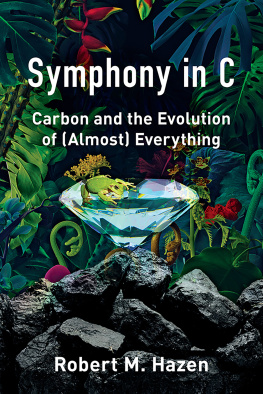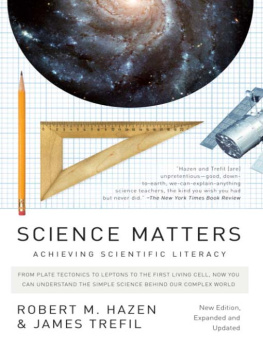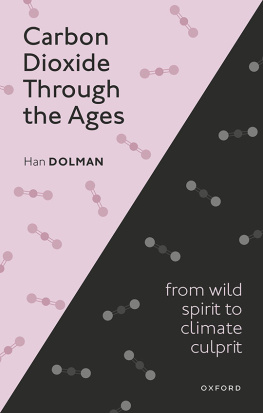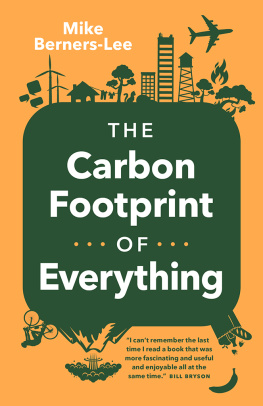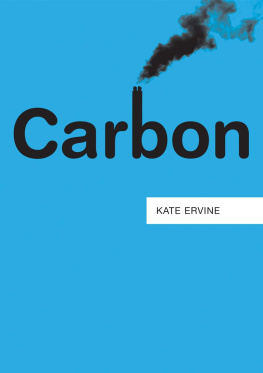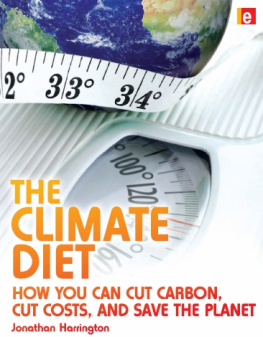Contents
Guide

Also by Robert M. Hazen
The Story of Earth:
The First 4.5 Billion Years, from Stardust to Living Planet
Genesis: The Scientific Quest for Lifes Origin
The Diamond Makers
The New Alchemists:
Breaking through the Barriers of High-Pressure Research
The Sciences: An Integrated Approach (with James Trefil)
Why Arent Black Holes Black: The Unanswered Questions at the Frontiers of Science (with Maxine Singer)
The Breakthrough: The Race for the Superconductor
Science Matters: Achieving Scientific Literacy (with James Trefil)
Keepers of the Flame:
The Role of Fire in American Culture, 17751925 (with Margaret Hazen)
Wealth Inexhaustible: An Introduction to the History of American Mineral Industries to 1850 (with Margaret Hazen)
The Music Men: An Illustrated History of American Brass Bands, 18801920 (with Margaret Hazen)
Comparative Crystal Chemistry (with Larry Finger)
North American Geology
The Poetry of Geology
American Geological Literature (with Margaret Hazen)

Carbon and the Evolution of (Almost) Everything
Robert M. Hazen

Copyright 2019 by Robert M. Hazen
All rights reserved
First Edition
For information about permission to reproduce selections from this book, write to Permissions, W. W. Norton & Company, Inc., 500 Fifth Avenue, New York, NY 10110
For information about special discounts for bulk purchases, please contact
W. W. Norton Special Sales at specialsales@wwnorton.com or 800-233-4830
Book design by Patrice Sheridan
Production manager: Julia Druskin
Library of Congress Cataloging-in-Publication Data is available
ISBN 978-0-393-60943-1
ISBN 978-0-393-60944-8 (ebk.)
W. W. Norton & Company, Inc., 500 Fifth Avenue, New York, N.Y. 10110
www.wwnorton.com
W. W. Norton & Company Ltd., 15 Carlisle Street, London W1D 3BS
For my friends and colleagues
of the Deep Carbon Observatory
The adventure has only just begun.
Contents
L OOK AROUND YOU. Carbon is everywhere: in the paper of this book, the ink on its pages, and the glue that binds it; in the soles and leather of your shoes, the synthetic fibers and colorful dyes of your clothes, and the Teflon zippers and Velcro strips that fasten them; in every bite of food you eat, in beer and booze, in fizzy water and sparkling wine; in the carpets on your floors, the paint on your walls, and the tiles on your ceilings; in fuels from natural gas to gasoline to candle wax; in sturdy wood and polished marble; in every adhesive and every lubricant; in the lead of pencils and the diamond of rings; in aspirin and nicotine, codeine and caffeine, and every other drug youve ever taken; in every plastic, from grocery bags to bicycle helmets, cheap furniture to designer sunglasses. From your first baby clothes to your silk-lined coffin, carbon atoms surround you.
Carbon is the giver of life: Your skin and hair, blood and bone, muscle and sinews all depend on carbon. Every cell in your bodyindeed, every part of every cellrelies on a sturdy backbone of carbon. The carbon of a mothers milk becomes the carbon of her childs beating heart. Carbon is the chemical essence of your lovers eyes, hands, lips, and brain. When you breathe, you exhale carbon; when you kiss, carbon atoms embrace.
It would be easier for you to list everything you touch that lacks carbonaluminum cans in your fridge, silicon microchips in your iPhone, gold fillings in your teeth, other odditiesthan to enumerate even 10 percent of the carbon-bearing objects in your life. We live on a carbon planet and we are carbon life.
Every chemical element is special, but some elements are more special than others. Of all the periodic tables richly varied denizens, the sixth element is unique in its impact on our lives. Carbon is not simply the static element of stuff. Carbon provides the most critical chemical link across the vastness of space and timethe key to understanding cosmic evolution. Over the course of almost 14 billion years, the Universe has evolved and become ever more richly patterned, with seemingly endless fascinating and quirky behaviors. Carbon lies at the heart of this evolutionchoreographing the emergence of planets, life, and us. And, more than any other ingredient, carbon has facilitated the rapid emergence of new technologies, from steam engines of the Industrial Revolution to our modern Plastic Age, even as it accelerates unprecedented changes in environment and climate on a planetary scale.
Why focus on carbon? Hydrogen is a far more abundant chemical element, helium more stable, and oxygen more reactive. Iron, sulfur, phosphorus, sodium, calcium, nitrogenall have fascinating stories to tell. All played critical roles in Earths complex evolution. But if you wish to find meaning and purpose in the vast cold and dark of the Universe, look to carbon; carbon, by itself and in chemical combinations with other atoms, provides unmatched cosmic novelty and unparalleled potential for cosmic evolution.
Of more than 100 chemical elements, carbon stands out as an element of our aspirations and fears. Novel carbon-based materials, invented by the thousands every yearKleenex, spandex, Freon, nylon, polyethylene, Vaseline, Listerine, Bactine, Scotch tape, Silly Puttyenhance our lives in countless ways, both seen and unseen. But the proliferation of these synthetic chemicals has led to unintended consequences: troubling holes in the protective ozone layer, deadly allergic reactions, and carcinogens by the score. As the basis of all biomolecules, no other element contributes so centrally to the well-being and sustainability of life on Earth, including our human species. But carbon atoms, when missing or misaligned, can lead to disease and death.
The near-surface carbon cycle stabilizes Earths climate, ensures the health of ecosystems, and provides us with our most abundant supplies of inexpensive energy. Yet, if the distribution of carbon atoms becomes skewed by natural or human activitieserupting volcanoes, burning coal, an errant asteroid, vanishing forestsclimates can change and ecosystems can collapse. And carbons influence is not confined to the near-surface realm of the living; carbons behavior in Earths hidden, deep interior epitomizes the dynamic processes that set apart our planet from all other known worlds.
The story of carbon is, in a sense, the story of everything. Yet mysteries about this ubiquitous, indispensable element abound. We dont know how much carbon Earth holds, nor do we fully comprehend its varied forms hidden deep within our planet. We dont understand the movements of carbon atoms as they cycle between Earths surface and its deep interior, nor can we say whether those movements have changed significantly through billions of years of Earth historythrough deep time. Despite the existence of millions of known carbon compounds, scientists have only just begun to explore the richness of carbon chemistry. And the greatest mystery of allthe origin of lifeis inextricably linked to the behavior of carbon in complex chemical combinations with other elements.
From quantities and forms, to movements and origins, what we know about carbon is dwarfed by our ignorance. We must find answers, but how can we hope to bridge such yawning chasms in our understanding? The very structure of the scientific enterprise would seem to conspire against sustained progress. Universities lack departments of carbon science, and large-scale, cross-disciplinary research ventures are rare. Scientific discovery rests on asking questions about the natural world, but it also depends on finding resources in a climate of limited time and money, at a time when disciplinary specialization often trumps integration.

